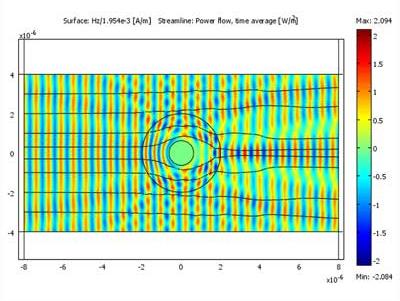New Type Of Invisibility Cloak Cancels Out Light Waves

What’s the Latest Development?
Scientists at the University of Texas-Austin have succeeded in creating a miniature cloak that can render objects invisible in microwave light. As described in a paper published in this week’s New Journal of Physics, the cloak is made of a metascreen, which consists of very thin strips of copper tape attached to a similarly thin polycarbonate film. The flexibility of this material makes it more practical than bulkier versions used in other cloak designs. In tests, the team was able to hide a 7-inch cylindrical rod from view.
What’s the Big Idea?
Unlike other attempts at invisibility cloaks, which bent light rays around an object to prevent scattering or reflection, this cloak works by canceling out light rays that hit the shielded object. Physicist and paper co-author Andrea Alu says that theoretically this technique should work for hiding objects in visible light as well, since the metascreen material “[is] easier to realize at visible frequencies than bulk metamaterials and this concept could put us closer to a practical realization.” The team also suggests it could be used with noninvasive sensors and other medical devices in the future.
Photo Credit: Shutterstock.com





